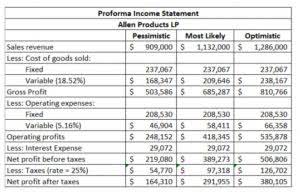
For instance, switching suppliers too frequently can lead to instability in relationships and mistrust from partners. Building long-term partnerships with reliable suppliers may prove more beneficial in the long run by enabling mutual learning and process improvement. Costs incurred to fulfil a contract have similarities with work-in-progress, but they are explicitly excluded from the scope of IAS 2 (IAS 2.8). Similarly, all contract costs are also excluded from the scope of IAS 38 (IAS 38.3(i)).
A Step-by-Step Guide to Calculating Incremental Costs
If the long-run predicted cost of the raw materials is expected to rise, then electric vehicle prices will likely be higher in the future. The attempt to calculate and accurately predict such costs assist a company in making future investment decisions that can increase revenue and reduce costs. QuickBooks The calculation of incremental cost needs to be automated at every level of production to make decision-making more efficient. There is a need to prepare a spreadsheet that tracks costs and production output.
- Tax Cuts and Jobs Act (TCJA), businesses benefit from 100% bonus depreciation on qualified property, reducing taxable income in the year of purchase.
- A company incurs a sales commission of $10,000 for securing a $500,000 contract.
- On the other hand, costs that do not increase with an increase in production, such as fixed costs, are not considered incremental costs.
- Incremental costs are usually lower than a unit average cost to produce incremental costs.
- Incremental costs are additional expenses a business spends to expand production.
Incremental cost and its effect on pricing

In this article, we will explore the definition, calculation, and limitations of Marginal Cost, and discuss how it is used by businesses in the real world. Understanding a company’s incremental costs is important for decisions like setting pricing, production levels, make vs. buy, adding product features, and more. Remember, incremental costs are context-specific, and thorough analysis ensures informed decision-making. Whether you’re optimizing business processes, designing public policies, or improving patient care, understanding incremental costs empowers you to navigate complex choices effectively. Incremental costing is a crucial concept when it comes to calculating and comparing the costs and benefits of different options.
- When a business operates near full capacity, incremental cost analysis becomes more complex due to production constraints.
- While the calculation itself is straightforward, the key is identifying the right base and incremental volumes to analyze.
- These costs may include but are not limited to the purchase, transportation, installation, and maintenance of the equipment.
- For example, when considering purchasing a new car, it is essential to evaluate the incremental cost of ownership, including factors such as fuel consumption, maintenance expenses, and insurance premiums.
Marginal Costs Definition
Incremental cost is how much money it would cost a company to make an Accounting Security additional unit of product. Analyzing incremental costs helps companies determine the profitability of their business segments. Alternatively, once incremental costs exceed incremental revenue for a unit, the company takes a loss for each item produced.

Incremental cost guides you in choosing when to make your product and when to outsource. Often, it is more cost-efficient to outsource from a specialty company instead of doing it from scratch. A company incurs a sales commission of $10,000 for securing a $500,000 contract. Telemarketing is a form of direct marketing that involves contacting potential or existing… Customer success is a term that describes the process of ensuring that customers achieve their… In this case, the bakery incurs an additional $5 for each extra loaf of bread.
Every effort must be made to make correct cost estimates so that the choice of an opportunity that a business ultimately makes doesn’t affect the company negatively. Incremental analysis is a decision-making tool used in business to determine the true cost difference between alternative business opportunities. Assume the same facts as in Example A, except that the contract contains a renewal option for an additional three years. Company A pays an additional commission of $5,000 (or 5 percent of total contract value) upon renewal. Based on historical experience with similar customers, Company A expects Customer B to renew the contract for one additional three-year period.Company A must determine if the two commissions are commensurate. Because the commissions are the same amount and relate to contracts of equal value, they are commensurate.

Here are some incremental cost examples based on different scales of production. Incremental costs are additional expenses a business spends to expand production. It is the total amount of money paid for producing an additional incremental cost unit of a product. The expense of subcontracting a particular service includes the additional costs incurred by a firm that are not present when those services are provided in-house. This expense includes costs such as labor fees, supervision expenses, and related taxes. It is important to carefully assess the advantages versus the disadvantages of outsourcing before making a decision.
- Depending on the facts and circumstances, these incremental costs are sometimes recorded as assets and sometimes as expenses.
- To increase production by one more unit, it may be required to incur capital expenditure, such as plant, machinery, and fixtures and fittings.
- For longer-term contracts, amortization is typically done on a systematic basis.
- Whether you’re managing a business or studying economics, mastering this concept is a valuable skill.
- Initially, as production increases, Marginal Costs may decrease due to efficiencies gained.
Uses for Incremental Analysis
Understanding these provisions helps companies optimize after-tax returns while maintaining compliance with IRS regulations. For example, if a factory reaches capacity, renting additional space or purchasing new machinery may be necessary. Administrative costs, such as higher insurance premiums or expanded quality control measures, may also increase. Tracking these expenses ensures that additional revenue from higher production offsets rising overhead. By summing up these incremental costs, XYZ Electronics can make an informed decision about the expansion.

The fixed costs don’t usually change when incremental costs are added, meaning the cost of the equipment doesn’t fluctuate with production volumes. Conversely, fixed costs, such as rent and overhead, are omitted from incremental cost analysis because these costs typically don’t change with production volumes. Understanding incremental costs can help a company improve its efficiency and save money.